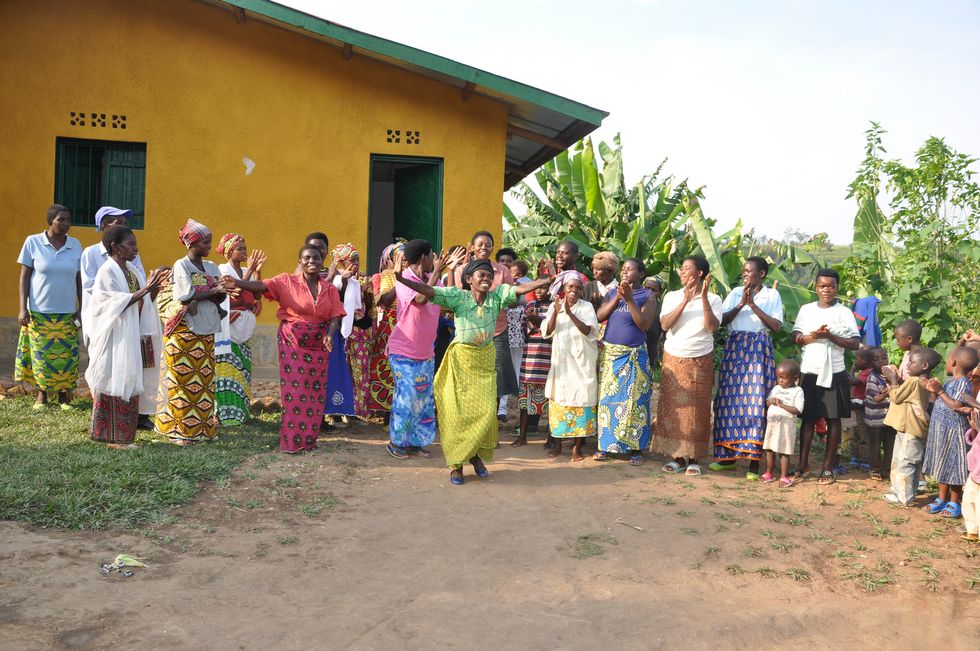In the fall of 2017, I had the amazing opportunity to live and teach in Rwanda for a month thanks to Virginia Tech Study Abroad. I spent the two months leading up to Africa in Switzerland, researching the foreign land as well as a couple NGO’s working in the area. Mabawa caught my attention.
Mabawa is a nonprofit focused in Nyamyumba, a tiny village in Rwanda. Its goal is to assist the families who suffered due to the genocide and to help them become a sustainable community again. It was one thing to read about Mabawa, its efforts, and its impact in Nyamyumba, but it was another to actually become a member of the team. A team of which you can also be a part.
My First Impression
So, after endless research, I flew to Rwanda. I was then transported to Nyamyumba in a crowded, beaten-up bus, one that was not made to ascend and descend the hilly, rocky terrain. The city capital of Kigali disappeared into the background, with its bustling streets, tall buildings, countless banks, and the tiny town of Nyamyumba came into focus: banana trees every which way, dirty children scurrying about, and small yellow houses — each stamped with a wing. The wing, a symbol for Mabawa; they chose it to symbolize the purpose of giving the village wings to fly on their own again.
So there I was — in my new home for the next few weeks. I wasn’t sure what journey I was about to embark upon, but I knew it would be one for the books. We spent that first day getting acclimated to the new scenery — or at least trying to. The truth was, I had never been anywhere like it. When it was nighttime, it was pitch black. No light streaming in the window from street lamps or buildings. And when it was morning, it was blindingly bright. No curtains to keep out the day. The only option for transportation was walking. So we walked around, explored a bit: the tea plantation, the school, the town hall. Other than that, there wasn’t much to investigate. Which, actually, was surprisingly nice. Cozy.
Our First Project
Our first project involved paint— buckets and buckets of paint. Blue paint, red paint, pink paint, yellow paint, paint, paint, paint. On the walls, on the floor, on my face, on my clothes. We were given the task of painting the town hall as well as several classrooms. After collaborating with our translators, we decided on a few different designs including the Rwandan flag, a giraffe, a gorilla, a tree, the alphabet, and the beautiful rolling hills for which the country is notorious. I was in charge of the giraffe, the final product of which makes me quite proud.
As we were painting, people began to gather around the doorways — curious. Most of these people were children, running about the village as always, trying to find something to do. They began dancing to our music and soon enough, a dance party erupted. That’s when I met my first students.
First Day of School
A couple of days later, it was time to officially begin implementation of our curriculum. I threw on my clothes and quickly filled my backpack with supplies, ready to get to business. But I wasn’t prepared for what awaited me just half a mile away in the schoolhouse.
Hundreds of smiling, eager, inquisitive children were there; children who actually wanted to learn, children who were actually excited about learning. And who were oh-so-welcoming. We had a weird skin color and weird hair and we spoke funny, but they extended open arms. It was baffling to me how happy they all were. Most wore dirt-stained shirts and too-big pants or worn-down shoes. They didn’t own any fancy toys or have access to an iPad or iPhone. And some were even malnourished. But there they were in front of me, sitting at their desks with smiling faces, happy as could be.
Why Mabawa is Special
Mabawa recognizes what Nyamyumba does and does not need. It does not need to be reset completely. It does not need foreigners to come in and take control. The people of Nyamyumba simply need help getting back on their feet after the devastating blow that was the genocide. That is exactly what Mabawa is doing. They so far have built new schools for the kids, which include larger classrooms to fit all of the students seeking an education. They also have installed water tanks, as well as provided families with farm animals. These are all efforts toward creating sustainable change: change the people of Nyamyumba can manage once all aid concludes.
I cannot send you to Africa to meet these inspiring kids. I cannot bring them here to America to meet you. However, I can try to explain the impact they have had on my life and how deserving the people of Nyamyumba are of your time, money, and attention. Visit https://www.mabawa.org/sostienici if you're interested in helping these amazing people.

















